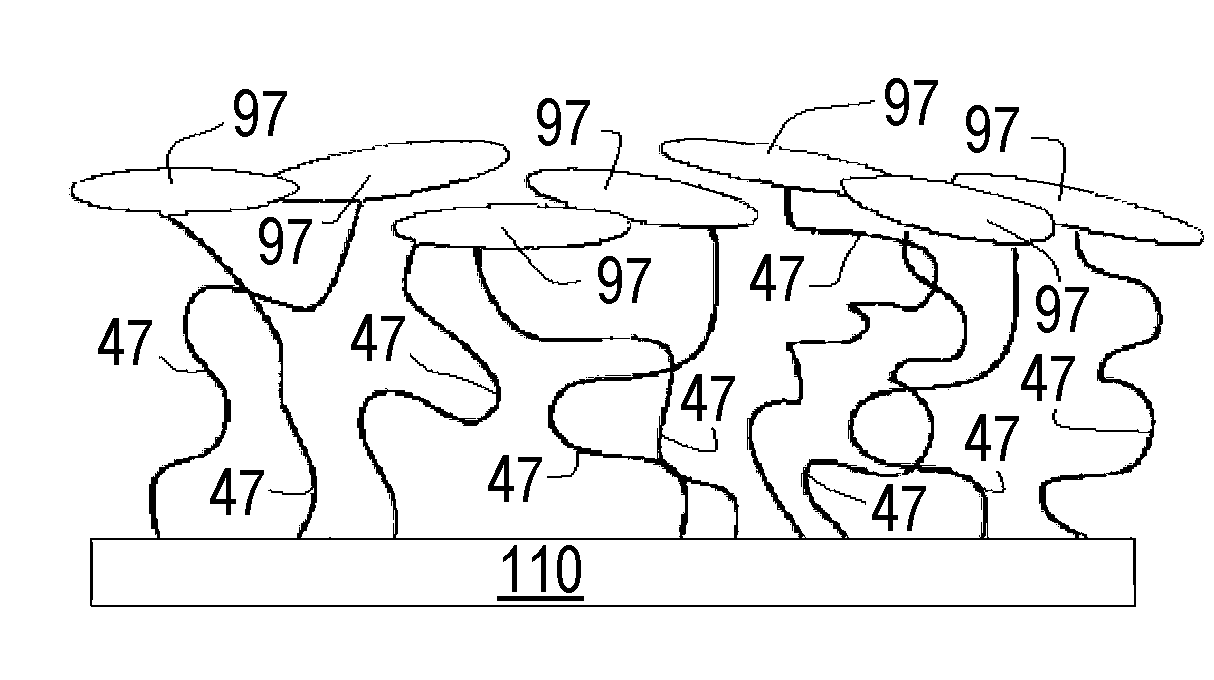Surface Treated Polymeric Synthetic Hernia Mesh Prosthesis, Surface Treated Sutures and Staples and Methods of Manufacturing the Same
a technology of synthetic materials and prostheses, applied in the field of surface treatment medical devices, can solve the problems of affecting the quality of surgical instruments,
- Summary
- Abstract
- Description
- Claims
- Application Information
AI Technical Summary
Benefits of technology
Problems solved by technology
Method used
Image
Examples
examples
[0112]One group of modified bulk material was prepared, a total of 34 hollow fiber strips underwent a 40 sec O2 / N2 plasma cleaning followed by a 40-second siloxane deposition. Within 48 to 72 hours the siloxane treated material was heparinized. (NH)
Materials and Methods
[0113]1. Microporous Hollow Fiber Membrane Bulk Material Lot#13502-4-4 precut to 36″ lengths
2. Glass microscope slide
3. Siloxane—Tetramethyldisiloxane, 97% P / N 235733 / / Batch 04526KC (Aldrich)
[0114]4. For chemical list see table IV
Set-Up and Pre-Testing
[0115]1. Glass microscope slide
2. After placing the glass slide in the reactor and pulling vacuum to 1) at a rate of 20% and N2 through MFC2 at a rate of 80% of total flow, and the pressure control was set to 250 motor. Plasma power was set for 200 W (power). See table I below
Pre-Test for Uniformity of Siloxane Deposition on Glass Slide
[0116]
TABLE ISet-Up ParametersSetSiloxaneMaterialProcessPressurePowerTimeTemperatureDescriptionDescription(mtorr)MFC1 / MFC2WattsSecondsSet...
PUM
| Property | Measurement | Unit |
|---|---|---|
| Adhesion strength | aaaaa | aaaaa |
Abstract
Description
Claims
Application Information
 Login to View More
Login to View More - R&D
- Intellectual Property
- Life Sciences
- Materials
- Tech Scout
- Unparalleled Data Quality
- Higher Quality Content
- 60% Fewer Hallucinations
Browse by: Latest US Patents, China's latest patents, Technical Efficacy Thesaurus, Application Domain, Technology Topic, Popular Technical Reports.
© 2025 PatSnap. All rights reserved.Legal|Privacy policy|Modern Slavery Act Transparency Statement|Sitemap|About US| Contact US: help@patsnap.com



